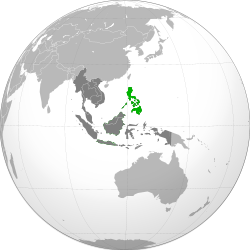The Philippines: Breakthrough In Mindanao
The next round of talks between the Philippines’ largest Muslim insurgent group and the government is a crucial step towards implementing a sweeping peace agreement signed in October.
The Philippines: Breakthrough in Mindanao, the latest report from the International Crisis Group, examines how the pact signed by the Moro Islamic Liberation Front (MILF) and the government of President Benigno Aquino III on 15 October 2012 is a breakthrough in many ways, but is far from a final peace. As with earlier texts reached during years of negotiations, this one – the “framework agreement” – defers several tough questions. At stake is the creation of a genuinely autonomous region in Muslim-majority Mindanao and the adjacent Sulu archipelago for the various ethnic groups collectively known as the Bangsamoro, with more powers, more territory and more control over resources.

“For years, it looked like the government and the MILF were never going to agree on the terms of a final peace”, says Bryony Lau, Crisis Group’s South East Asia Senior Analyst. “The framework agreement is still only a preliminary sketch, but it is Mindanao’s best chance yet”.
The pact envisions a new government for the troubled Muslim south that would raise its own revenues and have its own police and judiciary. It maps out a multi-step process to create this new entity by the time President Aquino’s term ends in 2016. The obstacles ahead are huge. Politics in Mindanao or Manila could get in the way, and it may be impossible to devolve sufficient power to the Bangsamoro government without running afoul of the constitution. The 12,000-strong MILF is unlikely to surrender its arms until the process is complete.
Peace talks began in 1997. They have moved glacially ever since and were interrupted three times by serious fighting. The breakdown in 2008 had damaging political implications because it hardened the positions of all stakeholders on critical elements of a final peace. At that time, the MILF and the government were ready to sign a similarly ambitious agreement. But it collapsed under pressure from other, more powerful interests, and a Supreme Court ruling declared the terms unconstitutional. The controversy centred on provisions outlining the territory of a new Bangsamoro homeland, which were highly favourable to the MILF. It was difficult to get the peace process back on track afterwards.
The framework agreement is remarkable for two reasons. First, the negotiators devised a different formula for determining which areas would be under a new Bangsamoro government. The process envisioned is risky for the MILF, but is politically and constitutionally watertight in the eyes of the Aquino administration. It guarantees all Bangsamoro a chance to decide whether they accept the terms of a final peace. Second, the pact makes it clear that the current, deeply dysfunctional autonomous region will at last be replaced, raising hopes of better governance in the poorest area of the Philippines.
Negotiations are continuing on tricky issues such as policing and taxation. Once these conclude, the hard part – implementation – will begin. If the process stalls at any stage, it may be difficult for the MILF leadership to control its commanders and retain popular support.
“The framework agreement is a triumph for both sides”, says Jim Della-Giacoma, Crisis Group’s South East Asia Project Director. “We’ve had a breakthrough because government negotiators came to the table with creative ideas, and their MILF counterparts responded by being flexible and pragmatic”.
